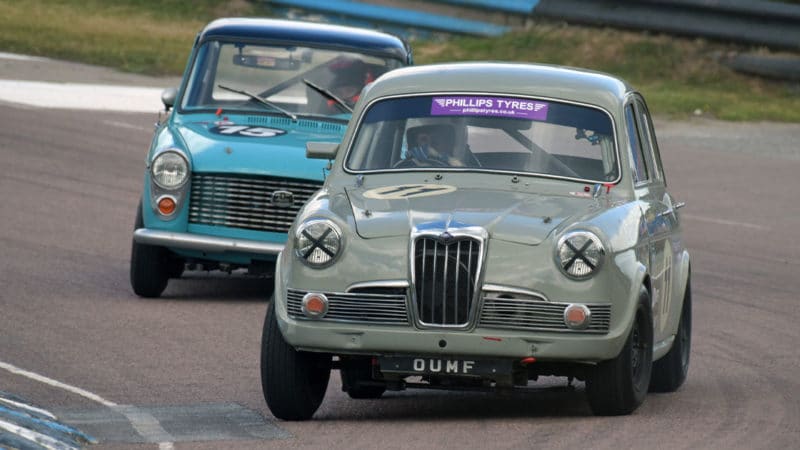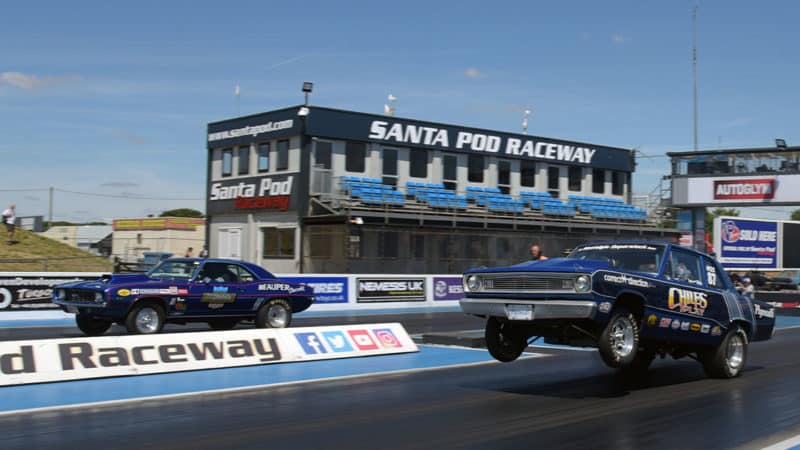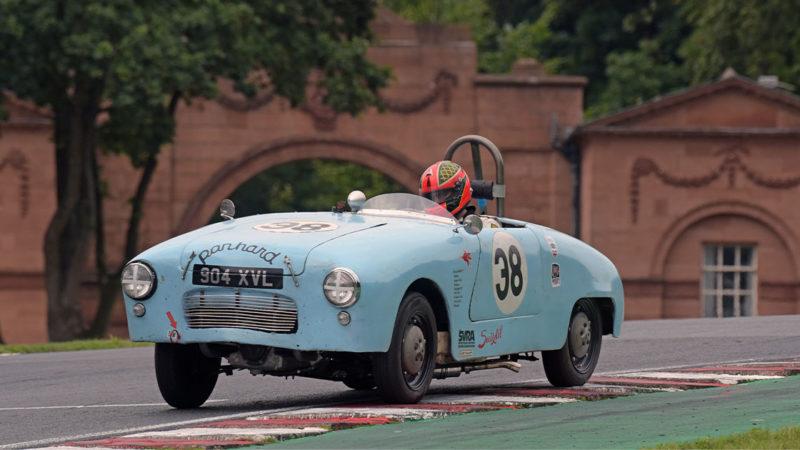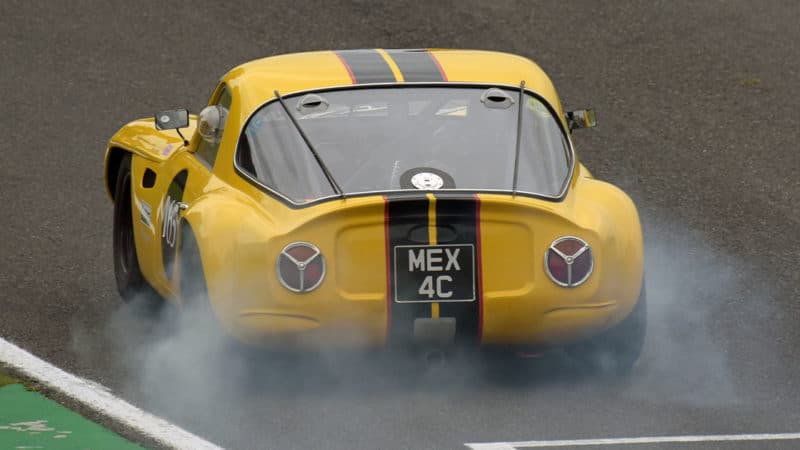Once you have conquered various narrow lanes to reach it, Santa Pod is far more welcoming than its no-frills appearance might suggest. Gate staff and officials are friendly, the press cabin contains a bottomless coffee well and also, on a scorching day such as this, provided vats of sun cream for those such as me who’d forgotten to bring any hair.
The paddock bristles with camaraderie and the sights therein are ever a pleasing shade of bonkers. Is that an Austin Marina van? Of course. With a supercharged 8.8-litre V8? Well, what else would you use? Makes you wonder why British Leyland never thought of it in period…
This was the first day of three at the strip’s annual retrospective (think Goodwood Revival, but in a straight line) and for the most part operated a RWYB (Run What Ya Brung) format, with cars lining up randomly before formal class-by-class competition began during the afternoon.
It would have been lovely to hang around for the duration but, as is nowadays inevitable, there was a fixture clash and I had to settle for one day of sensory overload.
If you haven’t yet been to Santa Pod, you should. If you can’t decide which meeting to attend, this isn’t a bad place to start. It’s a corner of Northamptonshire that feels forever like 1967, particularly on weekends such as this.
Historic Sports Car Club
Brands Hatch, July 9-10
By recent standards this had a decent entry for an HSCC meeting, at about 250 cars. Fact is, though, that not so many years ago the total would have been closer to 450. The biggest question concerns the Historic Touring Car Championship, which seems to have suffered some sort of meteorite strike at its heart.
Things seemed pretty bleak when only 15 cars turned up here for a short-circuit meeting in April, but at the time of writing that figure has since been beaten only once (18, Donington Park) and there have been single-figure entries at Silverstone and Cadwell. This was a fresh nadir, though, with only three cars turning out at one of the HSCC’s higher-profile meetings; at the corresponding fixture in 2020, there had been 39…
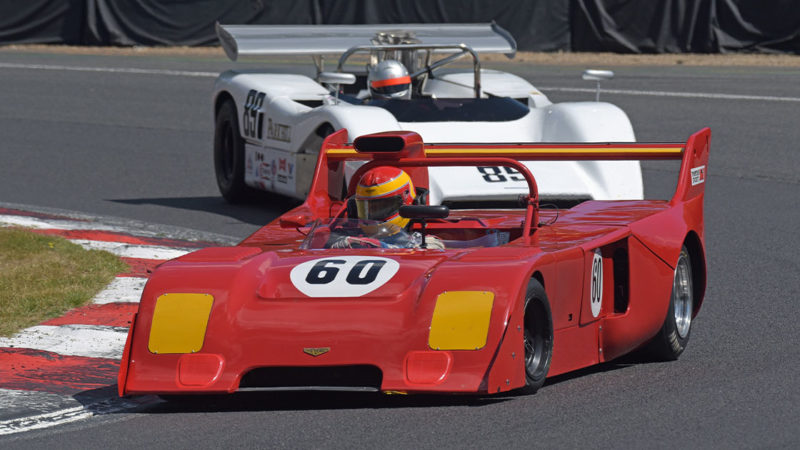
John Burton shows no sign of slowing down in his 81st year. The Chevron B26 driver held Warren Briggs’s McLaren M8E at bay in the opening Thundersports race, but missed the second (which Briggs won after coming through from the back of the grid)
Simon Arron
There was still much to relish, though, among the cars that materialised – Daniel Pyett’s persistence with an open-face helmet gives his F2 Tecno as good a period look as any in the sport – and there were also some nice human interest stories.
Runner-up in the European Two-Litre Sports Car Championship in both 1972 and 1973, driving Chevron B21 and B23 respectively, John Burton won the opening race of the weekend (Thundersports) in a B26. Fact: he turns 81 in November. Charles Barter isn’t far behind in the age stakes and took his Datsun 240Z to victory in the ’70s Road Sports race that followed…
Burton would have been a good bet for Thundersports part two, too, but for a bout of food poisoning that precluded his participation. Warren Briggs (McLaren M8E) had been Burton’s closest challenger in the opener, until gear linkage problems struck; he came through from the back of the field to win.

Having missed practice because his car wasn’t ready, Michael Lyons (Eagle FA74) charged through the field to win the opening Aurora XL race. Double F2 winner Martin Stretton is the shadow beyond
Historic F2 cars are particularly well suited to Brands: they sound the part, drip with purpose and look absolutely lovely sweeping between the ancient woodlands that embrace the grand prix loop. Martin Stretton picked up a brace of wins in his 2.0-litre March 712, but was pushed hard by the newer 782s of Matthews Watts and Wrigley. Watts worked his way to the front in the second race, but retired as a result of overheating.
Some fabulous cars, then, in an equally fabulous setting – and yet there were relatively few people there to watch.
As big a mystery, that, as the black hole into which so many Lotus Cortinas seem to have vanished…
MotorSport Vision Racing
Snetterton, July 17
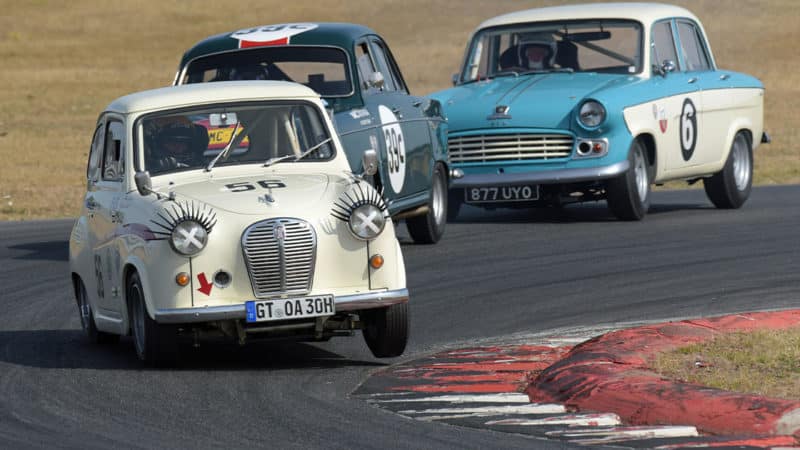
The Andy Newall/Rhea Sauter Austin A30 leads Matt Green (BMC Australia Austin Lancer) and James Colburn (Standard Vanguard) during the Jack Sears Trophy. All three failed to finish
Simon Arron
Another weekend, another historic race meeting with compromised potential – and perhaps another sign that the calendar can’t presently sustain as much retrospective racing as folk are keen to organise.
New for this season, the Snetterton Historic 200 set out to celebrate the one-time bomber base’s competitive heritage – and the principle was sound, ditto the decision to use the 200 version of the track, which is closest in spirit to the version of Snett that operated from 1974-2010. The extended 300 is fine for such as the British GT Championship, but a little too long for club racing – particularly when safety cars are deployed, which nowadays seems to happen as soon as somebody sneezes.

